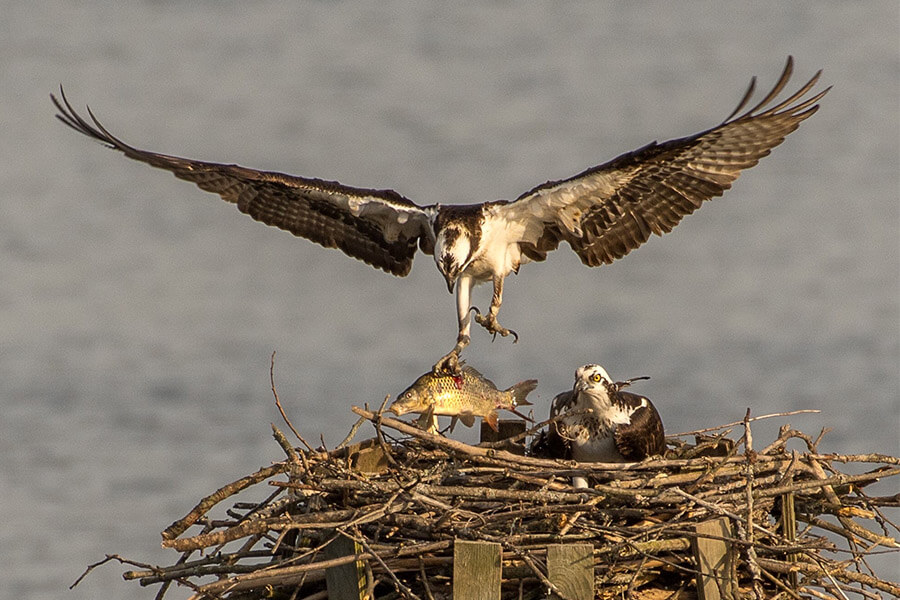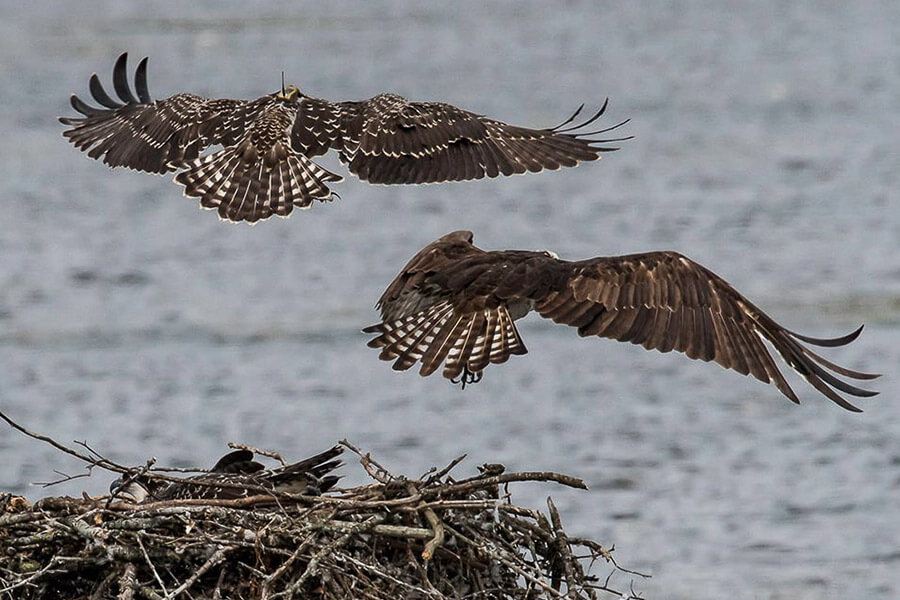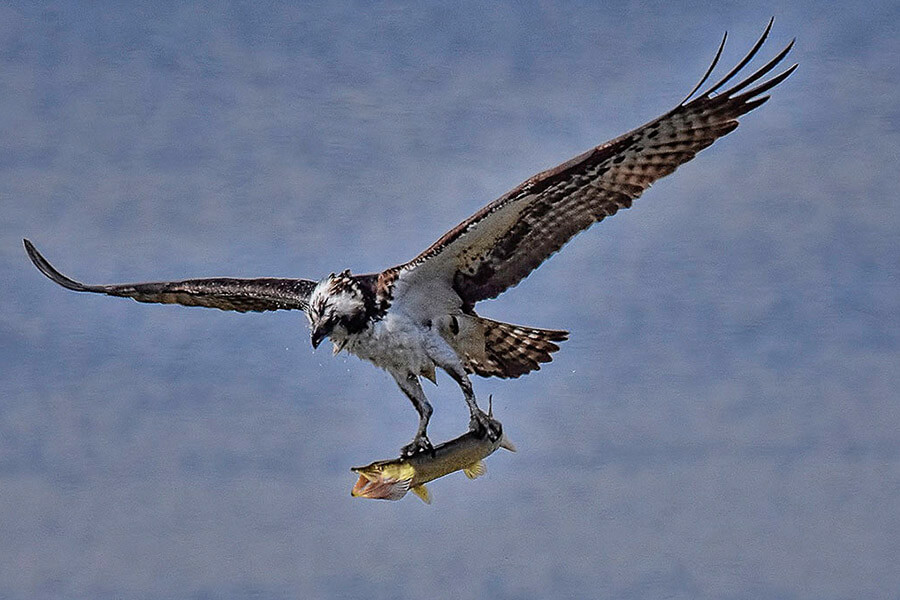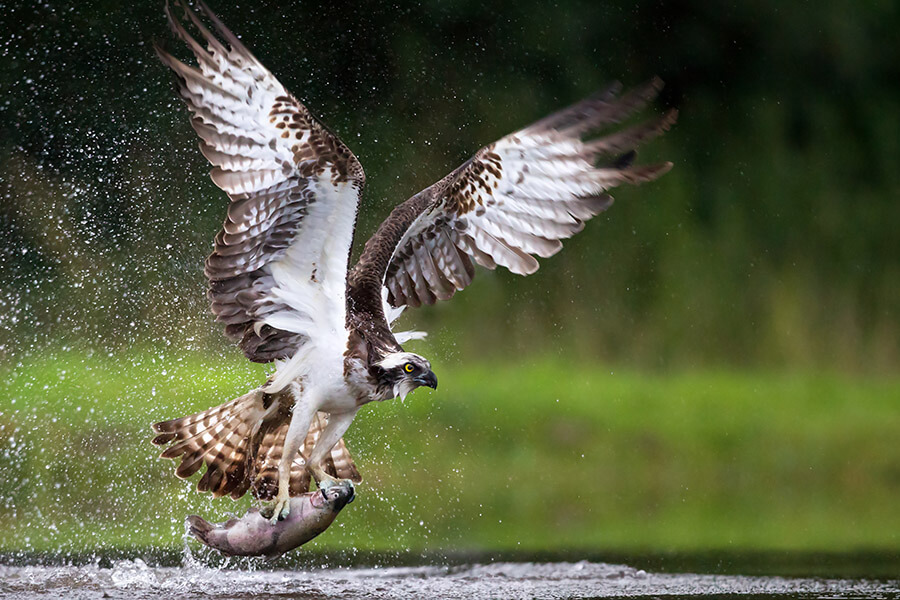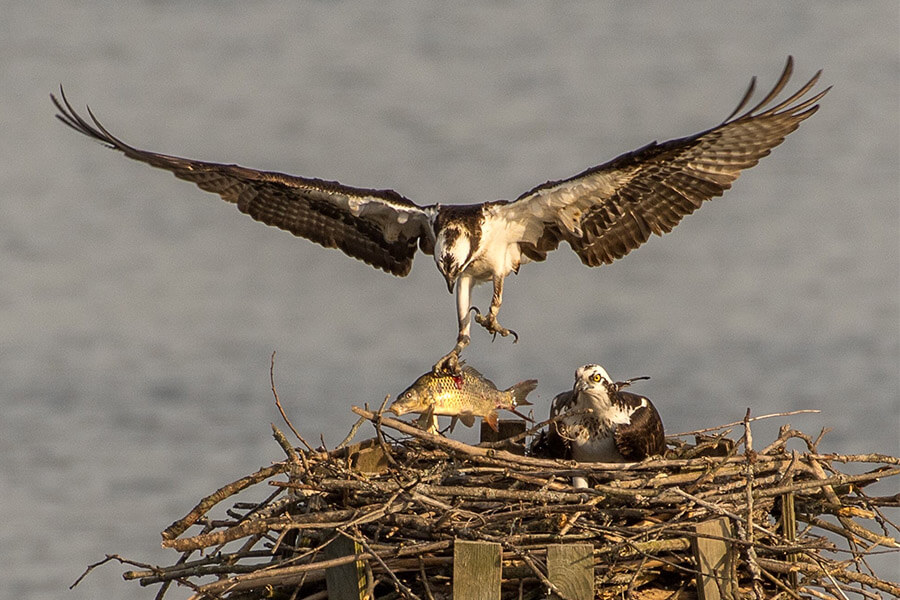Osprey
In 1998, the Huron-Clinton Metroparks in conjunction with the DNR, Detroit Zoological Society and DTE began to work on a project to reintroduce osprey into the southern half of the lower peninsula.
In the 1960s there was a significant decline in the osprey population. Several factors were thought to contribute to the decline, including habitat destruction, indiscriminate shooting and later the widespread use of pesticides like DDT nearly destroyed their populations.
Like the bald eagles, ospreys in Michigan, suffered from the damaging effects of DDT which caused eggshell thinning through bioaccumulation. During incubation, the eggshells crumbled killing the developing embryos. This contributed to a severe decline in the osprey population in the Great Lakes region, with nine out of every ten attempts failing to produce young.
After the use of DDT was banned in the United States in 1972, osprey reproduction rates began to increase. However, as a threatened species, osprey needed a little extra help to rebound.
Twenty years ago, the Reintroduction Program was launched to introduce 30 nesting pairs into lower Michigan by 2020 through a hacking project. With the support of volunteers, site managers, and employees from the Huron-Clinton Metroparks, Detroit Zoological Society, DNR and DTE the goal of 30 (and then some) nesting pairs was reached in 2010.
Reaching the goal 10 years early, deemed the program a great success. With the osprey still listed as a species of special concern, work is still done to band and track the birds for their own survival, but also for the health and cleanliness of our ecosystems.


